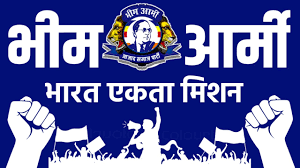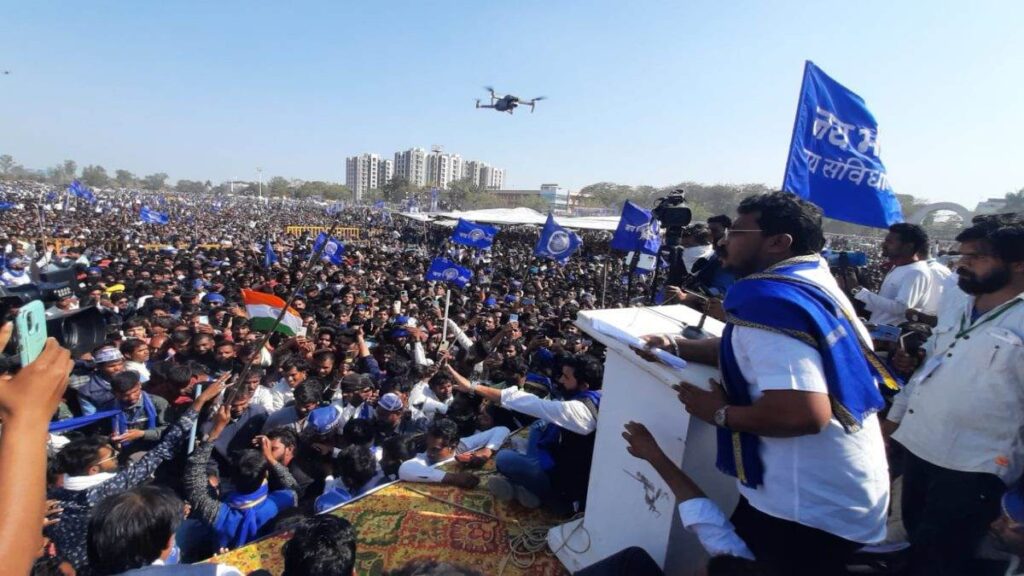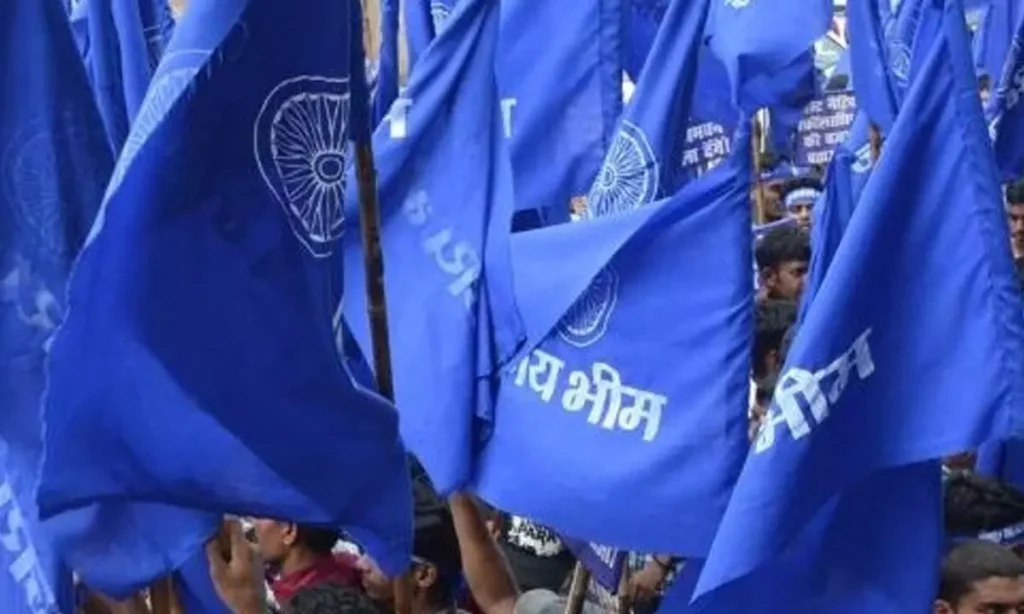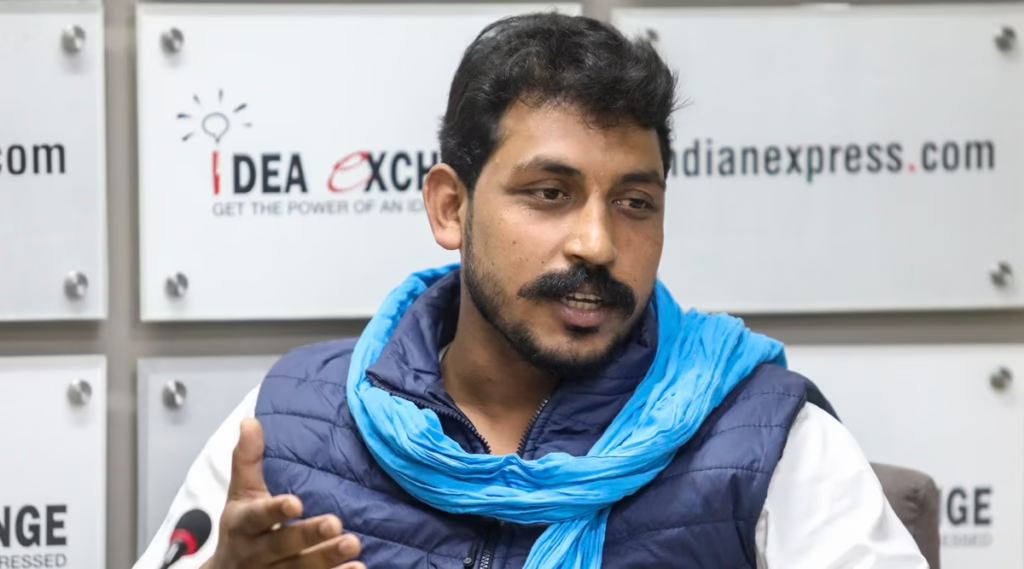Bhim Army’s Growing Footprint in Uttar Pradesh
The Bhim Army, formally known as the Bhim Army Bharat Ekta Mission, has become a formidable force for Dalit rights and social justice in Uttar Pradesh (UP). Led by Chandrashekhar Azad ‘Ravan,’ the national president of the Azad Samaj Party (Kanshi Ram) and Nagina MP, the organization has mobilized thousands to challenge caste oppression. On June 29–30, 2025, Bhim Army supporters clashed with police in Prayagraj’s Karchhana area, protesting Azad’s detention, sparking widespread attention. This article traces the Bhim Army’s history, its journey from a grassroots movement to a political force, its donation model, and the implications of its recent actions, drawing parallels with regulatory struggles like Karnataka’s bike taxi ban.
Bhim Army’s History and Journey: From Grassroots to National Prominence
Origins and Founding (2015)
The Bhim Army was founded on April 23, 2015, by Chandrashekhar Azad, Vinay Ratan Singh, Satish Kumar, and Manjit Singh Nautiyal in Saharanpur, Uttar Pradesh, inspired by Dr. B.R. Ambedkar’s vision of equality. Initially focused on education, the organization established its first free paathshala (school) in Fatehpur Bhado village, Saharanpur, to provide quality education to underprivileged Dalit and Muslim children. By 2017, it had grown to over 350 free schools across Saharanpur, Meerut, Shamli, and Muzaffarnagar, addressing disparities in education access.

Early Activism and Confrontations (2015–2017)
The Bhim Army gained prominence through bold assertions of Dalit identity. In 2015, Azad erected a signboard in Ghadkauli village reading “The Great Chamar Dr. Bhimrao Ambedkar Gram,” sparking tensions with upper-caste Rajputs who objected to the term “Great Chamar.” The Bhim Army intervened to prevent violence, showcasing its commitment to protecting Dalit rights. In another incident, it escorted a Dalit groom on horseback to his wedding, defying Rajput objections, reinforcing its confrontational approach to caste oppression.

The organization rose to national attention in May 2017 after caste clashes in Saharanpur, triggered by Dalits objecting to loud music during a Thakur procession honoring Maharana Pratap. The resulting violence saw one Thakur killed and 24 Dalit homes burned, with Azad named in 24 FIRs. A massive rally at Jantar Mantar, Delhi, in May 2017, attended by an estimated 10,000 supporters, solidified the Bhim Army’s influence, with chants of “Jai Bhim” and blue flags symbolizing Ambedkarite unity. Azad was arrested in June 2017 under the National Security Act but was released in September 2018 after public pressure.
Political Evolution and Expansion (2018–2024)
The Bhim Army expanded its scope, opposing the BJP’s Citizenship Amendment Act (CAA) in 2019–2020 and joining nationwide protests against the demolition of a Ravidas temple in Delhi. In March 2020, Azad announced the Bhim Army’s entry into electoral politics through the Azad Samaj Party (Kanshi Ram), aiming to challenge established parties like the Bahujan Samaj Party (BSP). The party’s slogan, “Saari Party Dekh Li, Ab Ki Baar Ketli” (We’ve tested all parties, now it’s teapot’s turn), resonated in Nagina, where Azad won a Lok Sabha seat in 2024 by over 50,000 votes, leveraging a coalition of 3.5 lakh Dalit and 43% Muslim voters.

Recent Milestones (2024–2025)
By 2025, the Bhim Army claims a countrywide membership of one crore, with its ideological arm, Mission 78, engaging teachers and retired officials to strengthen its grassroots network. Its disciplined approach, likened to the RSS’s organizational model, includes weekly meetings to discuss Dalit history and strategies for empowerment. Despite accusations from BSP leader Mayawati of being a “BJP agent,” the Bhim Army’s anti-caste activism and alliances with parties like the Samajwadi Party and Rashtriya Lok Dal have bolstered its influence. The June 2025 Prayagraj protests underscore its ongoing commitment to confrontational activism, even as it navigates legal and political challenges.
Bhim Army Donations: Funding the Mission
The Bhim Army relies on donations to sustain its free schools, support underprivileged families, and fund activism. Through its official website (aazadsamajpartyk.org), the organization encourages contributions to support its educational and social welfare initiatives, such as marriage expenses for poor families and aid for peasants. Donations are eligible for tax savings under Section 80G of the Income Tax Act, incentivizing contributions.
While exact donation amounts are not publicly disclosed, the Bhim Army’s extensive network—350+ schools and one crore members—suggests significant funding needs. The organization accepts donations via its website, with a minimum suggested amount of INR 101, similar to other Indian NGOs like the PM’s National Relief Fund. Donors can contribute through UPI platforms like BHIM, Google Pay, or PayTM, ensuring accessibility. The Bhim Army also promotes volunteering, emphasizing community involvement alongside financial support.

Unlike the Armed Forces Battle Casualties Welfare Fund, which uses a specific UPI VPA (armywelfare@syndicate), the Bhim Army’s donation process is streamlined through its website, though specific bank details or QR codes are not publicly listed in available sources. The lack of detailed financial reports limits transparency, but the organization’s scale and activities indicate robust community-driven funding.
The Prayagraj Protests: A Flashpoint in 2025
On June 29, 2025, Chandrashekhar Azad was detained at the Prayagraj Circuit House while attempting to visit the family of a murder victim in Isota village, Karchhana, and a minor rape victim in Kaushambi. Citing security concerns, the UP police prevented his visit, prompting around 5,000 Bhim Army and Azad Samaj Party supporters to protest. The demonstrations turned violent, with stone-pelting, vandalism of over a dozen vehicles (including police vehicles and buses), and attacks on shops. By June 30, police arrested 65 individuals, with an FIR against 55 named and 550 unidentified persons for rioting, attempt to murder, and property damage.
Azad, escorted to Varanasi airport and flown to Delhi, alleged a “deep conspiracy” behind the violence, claiming some perpetrators wearing Bhim Army’s blue scarves were not members. The Azad Samaj Party’s state president, Sunil Kumar Chittod, echoed this, denying organizational involvement. The UP police are analyzing videos and call records to identify more culprits, with threats to invoke the National Security Act and Gangsters Act.
Implications for Uttar Pradesh’s Socio-Political Landscape
The Prayagraj protests signal several trends:
- Political Polarization: The Bhim Army’s actions challenge the BJP-led UP government, with Azad’s threat of a “massive siege of Lucknow” escalating tensions.
- Social Justice: The protests amplify Dalit and Bahujan voices but risk backlash due to reported violence, complicating the Bhim Army’s image.
- Legal Fallout: With 65 arrests and potential NSA charges, the Bhim Army faces significant legal hurdles, yet its grassroots support remains strong.
- 2027 Elections: Azad’s 2024 Nagina victory and ongoing “Prabuddha Sammelans” across UP position the Bhim Army as a key player in future elections.
Conclusion: A Movement at a Crossroads
From its 2015 founding to its 2025 protests, the Bhim Army has transformed from a local education initiative into a national force for Dalit and Bahujan rights. Its 350+ free schools, one crore members, and electoral success via the Azad Samaj Party highlight its impact, despite challenges like arrests and political rivalries. Funded by community donations (minimum INR 101, tax-exempt under 80G), the organization continues to empower marginalized communities. As UP navigates the fallout of the Prayagraj unrest, the Bhim Army’s journey reflects the broader struggle for equity.

Comments